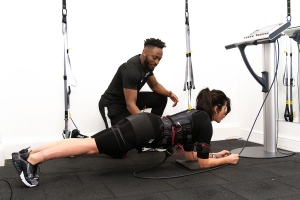Are you tired of walking and ready to take your fitness to the next level? Transitioning from a casual walker to a dedicated runner can be an exciting journey, and it's accessible to almost anyone with the right approach. In this guide are the steps to transform yourself from a walker into a runner, and before you know it, you'll be logging miles like a pro.
Step 1: Evaluate Your Current Fitness Level
The first step in your journey to becoming a runner is assessing your fitness level. Knowing where you are will help you set realistic goals and avoid overexertion. If you've been walking regularly, you likely have a good aerobic base to build upon, which is a significant advantage. However, remember that running can be more demanding on your joints and muscles, so take your time and don't rush into it.
Step 2: Choose the Right Footwear
Investing in a good pair of running shoes is crucial. Visit a specialty running store to have your gait analyzed and get fitted with the right shoes for your running style. Proper footwear will enhance your comfort and reduce the risk of injuries.
Step 3: Start Slowly with Interval Training
One of the most common mistakes people make when transitioning from walking to running is trying to run too far or fast at the beginning. Instead, begin with interval training. Alternate between walking and running in short intervals. For example, start with one minute of running followed by four minutes of walking, and repeat this cycle. As your fitness improves, increase the running time and decrease the walking time.
Step 4: Establish a Consistent Routine
Consistency is key when making the transition from walker to runner. Set a schedule and stick to it. Whether you run in the morning, during your lunch break, or in the evening, having a routine will help you build a habit and ensure that you're getting the necessary exercise. When transitioning from walker to runner, investing in a high-quality running knee support from Bear Hug can help protect your joints and prevent injuries as you increase your mileage and intensity.
Step 5: Listen to Your Body
Pay close attention to your body's signals. If you experience pain, particularly in your joints, shins, or knees, it's essential to address it promptly. Ignoring pain can lead to injuries that could set you back in your running journey. Don't be afraid to take rest days when needed, and consider adding cross-training activities like swimming or cycling to give your joints a break.
Step 6: Gradually Increase Distance and Intensity
As your stamina and strength improve, increase the distance you run and the intensity of your workouts. Focus on building both endurance and speed. Try to increase your total weekly mileage by no more than 10% each week to avoid overuse injuries.
Step 7: Fuel Your Body Properly
Running requires energy, so be mindful of your nutrition. A balanced diet with carbohydrates, proteins, and healthy fats will provide the energy needed for your runs. Also, stay hydrated, especially in hot weather. Proper nutrition and hydration are essential for your performance and recovery.
Step 8: Join a Running Group or Find a Running Buddy
Running with others can be highly motivating and enjoyable. Joining a local running group or finding a running buddy can help you stay accountable, share tips and advice, and make the experience more social and fun.
Step 9: Set Goals
Setting goals is a great way to stay motivated. Whether completing a 5k race or running a certain distance within a specific time frame, having dreams will keep you focused and committed to your running journey.
Step 10: Patience and Persistence
Becoming a runner takes time and persistence. Celebrate your achievements along the way, and remember that the journey from walker to runner is personal. Keep at it, and soon enough, you'll find yourself running easily and enjoying the many physical and mental benefits of running.






